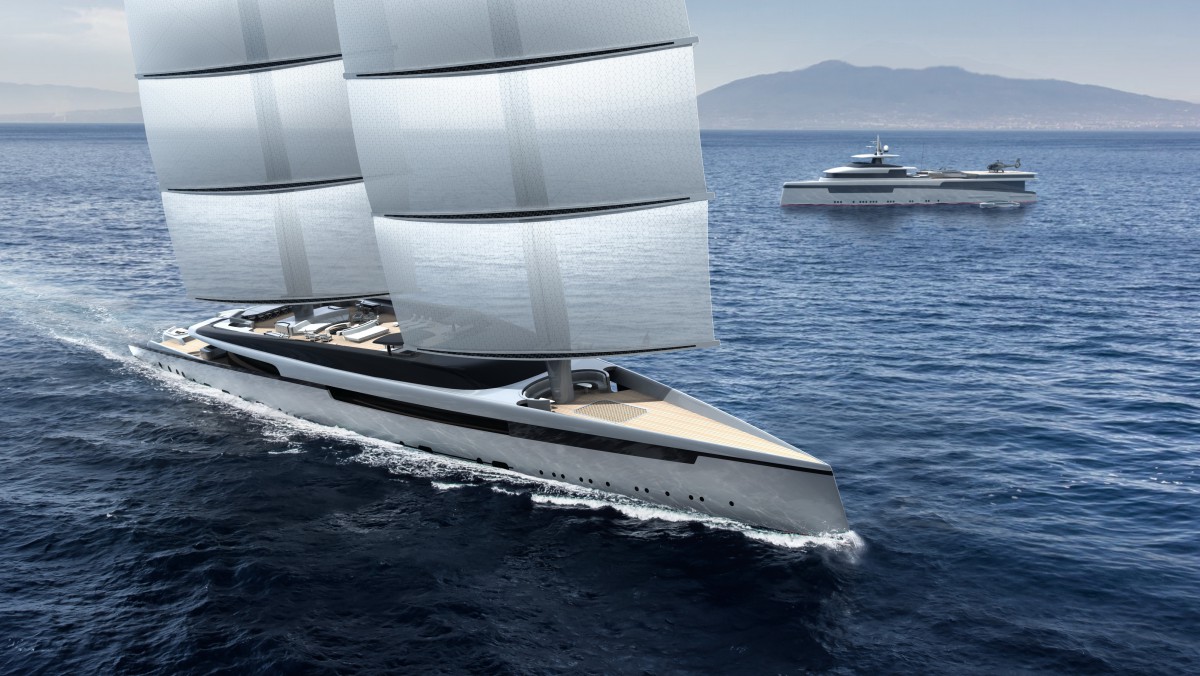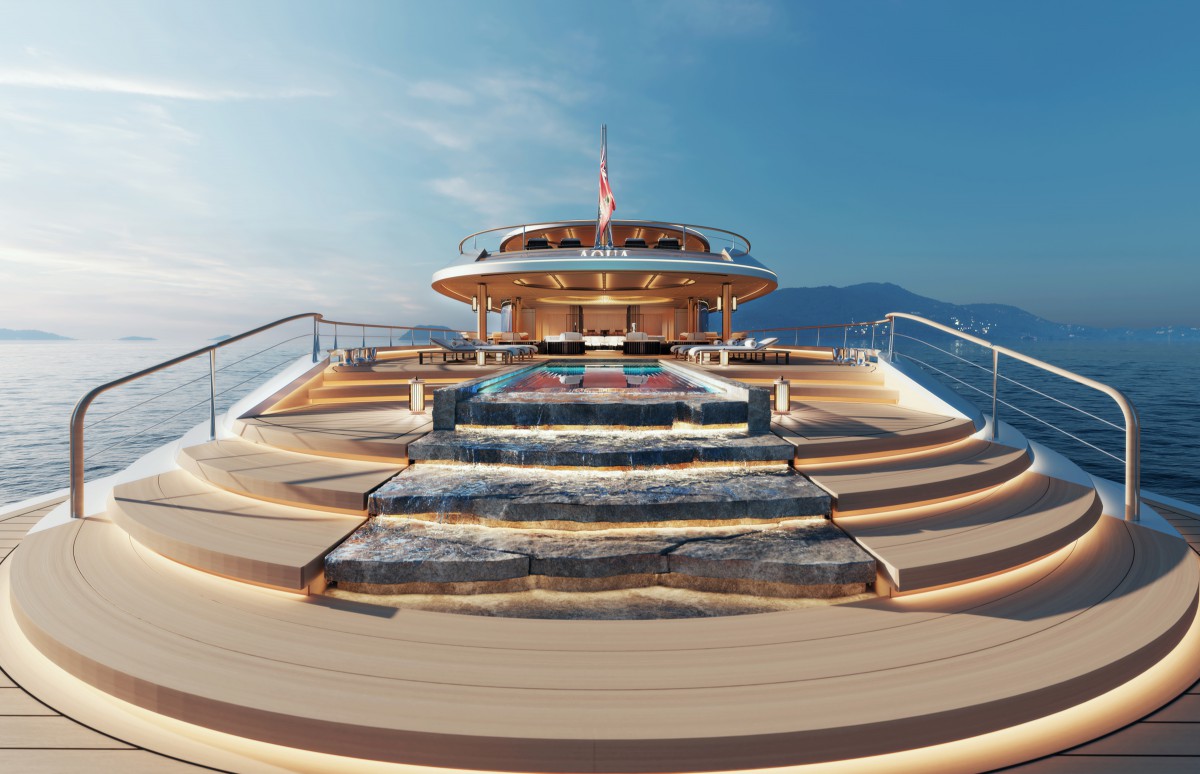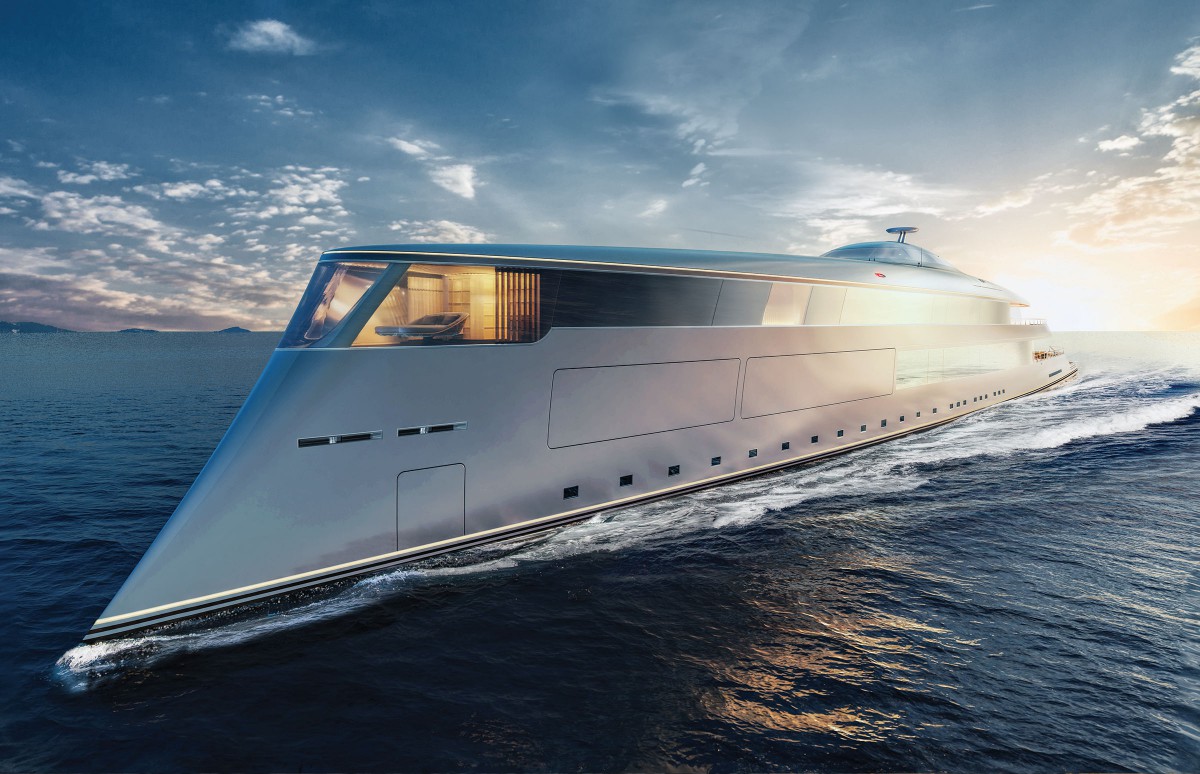In touch with the elements?
When it comes to superyacht designs at the upper end of the size spectrum, is a true connection with the water feasible?
Through a combination of pioneering technology, engineering and design, the genuine concepts or proposals that are emerging on the market have been astonishing. It is clear that the superyacht industry is developing yachts of a remarkable size that somehow manage to retain the connectivity with nature’s elements, which in my opinion, is synonymous with yachting, especially when it comes to sailing yachts.
When a new project or design is unveiled to the world, there is normally a golden sentence included in the press release along the lines of ‘designed to retain a connection to the sea’, which suggests that for many owners, a connection with the ocean is of vast importance . But, when it comes to projects at the upper end of the size spectrum, it’s remarkable that being connected to the water is something that is actually feasible, given the scale.
When it comes to projects at the upper end of the size spectrum, it’s remarkable that being connected to the water is something which is actually feasible, given the scale.
It was actually Royal Huisman, who raised an interesting point during the Monaco Yacht Show, when discussing its new concept Lotus, designed by ThirtyC Design in collaboration with the shipyard and Dykstra Naval Architects. During the show, the shipyard conveyed that ‘for some, the joys and thrills of cruising under sail may be diminished when a yacht grows above a certain size. For these owners, a superyacht under sail does not deliver quite the same personal experience; it can feel less in touch with the elements.’
It's an interesting point, as one can see how that connectivity with the elements can be compromised in favour of scale. With Project Lotus, Royal Huisman questioned if being in touch with the elements is a core focus: ‘Why build a yacht of 70m and above?’, the yard queried. In response, the shipyard has reiterated that for owners, the superyacht experience is multifaceted, encompassing a series of varying itineraries and excursions, from diving to exploration.

Royal Huisman therefore unveiled Lotus, described by the shipyard as "a concept whereby two vessels are designed, built and operated in a totally integrated manner to provide the most comprehensive range of superyacht experiences and services ever offered to owners and their guests by the superyacht industry”.
Essentially, the concept consists of a dual-ship package including a highly efficient DynaRig 88m sailing yacht and a 70m explorer yacht. The idea is that this is a ‘stripped back’ approach to sailing, configured to enable a skeletal crew to manage and trim the sails. So, while the yacht is still a project of considerable heft – with a gross tonnage of 1600gt – the idea is that sailing the yacht removes the complexity, in terms of both rigging and crew.
So, could the answer to a more honest sailing experience on a larger yacht be a reduction in the complexity of operation as well as the crew that operate it? For many, it would seem that exterior space is the obvious choice for providing connectivity with the elements, along with access to the sea. I think a larger concept that was outstanding in achieving this was Aqua by Sinot Yacht Architecture and Design, which was also unveiled during the Monaco Yacht Show.

“Aqua has been designed to provide those on board with the closest possible proximity to the water,” says Sander Sinot. “The aft deck features a unique and innovative series of platforms cascading down towards the sea, while a large swim platform allows all Aqua passengers to enjoy the optimal experience of accessing the water at sea level.”
With this 112m motoryacht concept, it is easy to pick up that a connection with the elements has actually been integrated into the design, which is impressive to see incorporated on a project of such scale. Furthermore, intricacies such as the panoramic ‘Aqua room’ located in the bow reiterate the commitment to establishing contact with the ocean.

I’m under the impression that, when it comes to designing a project at the upper end of the size spectrum, genuinely retaining a connection to the ocean is a serious challenge that takes a huge amount of skill. There are projects out there that I believe are so vast that it does hinder the connection those on board are able to have with the surrounding environment.
That said, I think when it comes to a concept like Aqua, which has been fully engineered by Lateral Naval Architects, it is possible to retain a connection with the environment despite being 112m. The expanse of exterior spaces, open-plan composition, natural finishes and minimalist design collectively contribute to retain that connection with the elements, which is fascinating to see on a design of such scale and a great example for the superyacht industry.
Profile links
Sinot Yacht Architecture & Design
NEW: Sign up for SuperyachtNewsweek!
Get the latest weekly news, in-depth reports, intelligence, and strategic insights, delivered directly from The Superyacht Group's editors and market analysts.
Stay at the forefront of the superyacht industry with SuperyachtNewsweek
Click here to become part of The Superyacht Group community, and join us in our mission to make this industry accessible to all, and prosperous for the long-term. We are offering access to the superyacht industry’s most comprehensive and longstanding archive of business-critical information, as well as a comprehensive, real-time superyacht fleet database, for just £10 per month, because we are One Industry with One Mission. Sign up here.
NEW: Sign up for
SuperyachtNewsweek!
Get the latest weekly news, in-depth reports, intelligence, and strategic insights, delivered directly from The Superyacht Group's editors and market analysts.
Stay at the forefront of the superyacht industry with SuperyachtNewsweek



